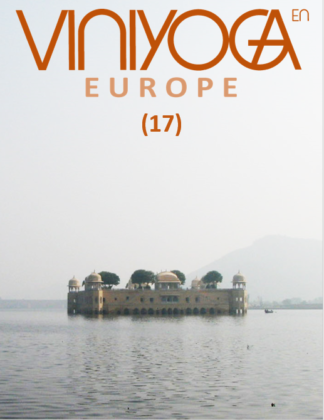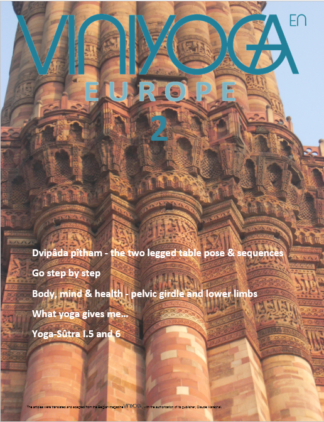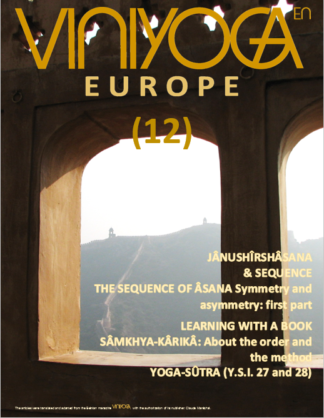Description
(35 pages)
JÂNUSHÎRSHÂSANA
This is an asymmetrical sitting forward bending posture. It combines the actions of two other famous postures (siddhâsana and pashcimatânâsana) which are described in several classical texts.
By Claude Maréchal
SEQUENCE
This sequence presents an example of gradual progression towards mastering jânushîrshâsana practiced in a static way for twelve breaths on each side.
By Claude Maréchal
THE SEQUENCE OF ÂSANA (Symmetry and asymmetry: first part)
In a sequence of âsana the right combination of symmetrical and asymmetrical postures works on all parts of the body and reorganizes and harmonizes its tonus.
We can combine these two large categories of postures in several ways in order to perform interesting explorations of the body and benefit from their effects.
By Claude Maréchal
LEARNING WITH A BOOK
The best book cannot replace a good teacher.
By T.K.V. Desikachar
SÂMKHYA-KÂRIKÂ: About the order and the method
Sâmkhya is one of the six pillars of ancient Indian thought. To a certain degree, it represents the theoretical basis of yoga and so cannot be separated from it. A serious yoga practitioner cannot ignore this “point of view” because the link between yoga and sâmkhya is very strong.
By Bernard Bouanchaud
YOGA-SÛTRA (Y.S.I.27 and 28)
It is possible to connect to Îshvara, call Him, glorify His qualities and thank Him, using the sacred syllable (Om). In these two aphorisms Patanjali exposes the mantra-yoga technique.
Comments by Professor T. Krishnamacharya; presentation and explications: T. K. V. Desikachar





